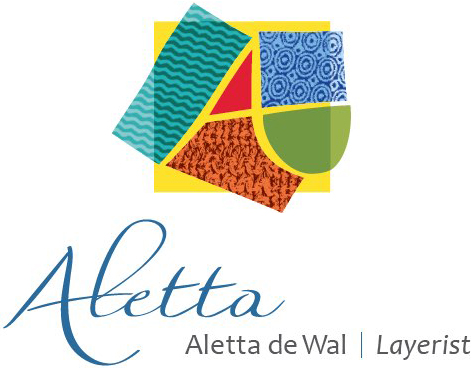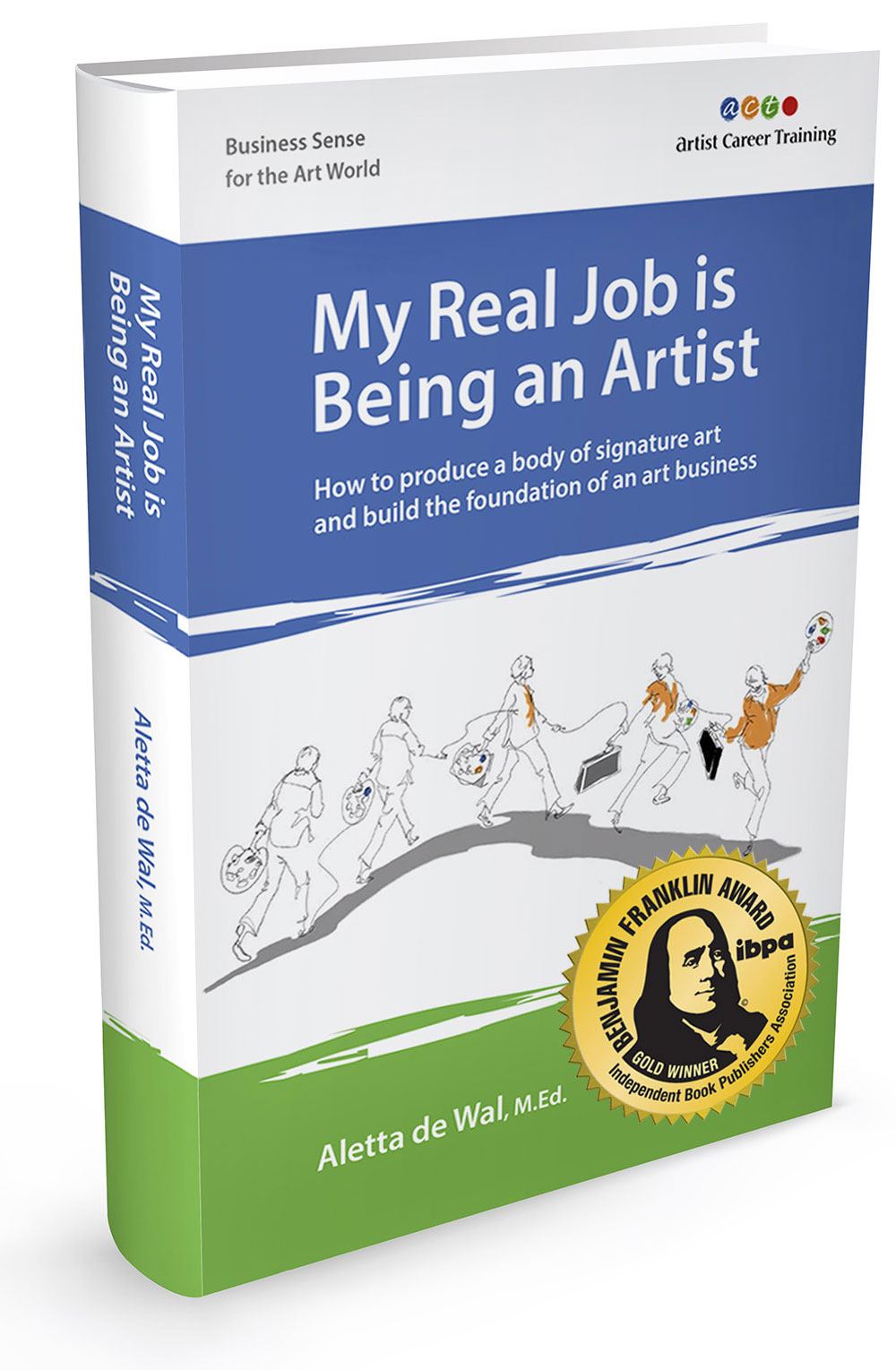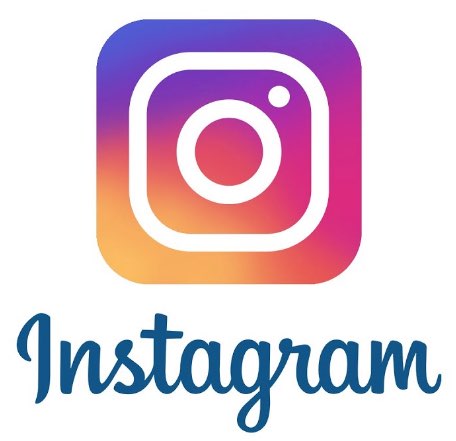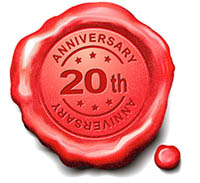 There is often additional information on the recording that is not in this written interview. Inspire yourself and listen while you make art.
There is often additional information on the recording that is not in this written interview. Inspire yourself and listen while you make art.
________________________________
My primary goal in these interviews is to inspire you with stories of people who make a living making art and who consider it a "real job." The artists I interview here have valuable tales to tell you about how to make a living from making art and still have a life.
Scottish Artist Julie Snyder's Art Career Spans Both Sides of the Country and Both Sides of the Atlantic
 ©Julie Snyder
©Julie Snyder
Scottish artist Julie Snyder is an award-winning artist in Southern California's art scene. "I paint the figure, finding my subjects in many walks of life and I bring them into the studio to model. I love to recreate an impressionistic environment on the canvas that suggests a story."
Julie's career has spanned both sides of the Atlantic. She studied drawing and painting at the Glasgow School of Art combining the austere style of Scottish tradition with Art Nouveau. Julie forged her craft as an illustrator in advertising, publishing and the motion picture industry, including Warner Bros.
Following the tradition of artists traveling abroad she led 13 women artists to rural France in fall 2010 and coordinated two exhibits of their work. This year Julie travelled again with artists to Eastern Europe and then France.
Julie's work has shown in the National Art Museum of Sport, the Pasadena Museum of History and the International Salon of Figurative Art. She has exhibited with The Oil Painters of America at the Waterhouse Gallery and Howard/Mandeville Gallery, and a host of other galleries on both sides of the US and the Atlantic.
Her work has also been been published as a hardback book, "Paintings: Julie Snyder Artist." And she has been featured in the American Art Collector, Southwest Art, STIG online media and the Pasadena Weekly.
A.C.T.: What prompted you to start your professional art career? What makes an artist professional?
My whole life I have taken for granted that I would be an art professional. I never pictured myself as an employee. So any professional work would be self employed. My artist career took two paths; initially I was quite commercially inclined and worked as a freelance illustrator. Then as I progressed I transitioned into fine art as a painter.
I left college early and found myself in Spain in a kind of sink or swim environment where I had to jump in and start "my career." I did several commercially driven projects and documented everything I did.
When I arrived in the U.S. as a young newlywed I looked through all the photos of things I had done and put together a portfolio. I hit the streets running - made plenty of calls and visited advertising agencies with my portfolio and began my career in earnest as a freelance commercial illustrator. I learned to do all kinds of work and meet deadlines. That was when I felt I was truly a professional artist - I had a professional identity - I was confident about offering and producing consistently professional art.
Over time and through circumstances I decided to switch paths and work as a fine art painter, as I was originally trained. The transition was not overnight. It took time and was well worth the effort. The change was necessitated when I could no longer work all night or meet impossible deadlines because I now had children.
A.C.T.: What is your artistic direction? What is your "life's work" as an artist, i.e. what legacy do you want to leave?
My muse has always been the figure. Because most of my work has been from life I have relied on studio settings to make my paintings. This works well as certain factors remain constant - like lighting. I usually rethink and recreate the environment so the backgrounds are either non-existent or sort of implied. I control the color palette for each painting. I went from painting portraits to telling stories. Now the space is becoming part of the story. ©2011 Snyder - Grey Robe 16 x 12I am now incorporating more decorative elements into my painting, both in the sense of design and application of paint. For example I made a printing block and used that to make a pattern in the background. This creates interplay with the figures. I would like to explore this further.
©2011 Snyder - Grey Robe 16 x 12I am now incorporating more decorative elements into my painting, both in the sense of design and application of paint. For example I made a printing block and used that to make a pattern in the background. This creates interplay with the figures. I would like to explore this further.
I am also interested in painting locations from my travels. This is an idea that is in production right now. I just got back from France and I am heading back to Europe this spring specifically to paint and lead art groups in these destinations. Scotland is planned for late May 2013.
My paintings will be my legacy - hopefully art that inspires others and enhances the world they live in.
A.C.T.: What is your business model and art business direction? Where and when will you have a retrospective?
I have learned that you can't rely on one source of income for too long.
- I partner with galleries and an artist representative to sell my art through their art exhibits.
- I teach drawing and painting in ongoing private classes and occasional intensive workshops.
- I derive income from sharing my expertise in art marketing, delivering the "Art of Selling Art" with Art Rep and Curator Margaret Danielak.
- I am the operations manager for The Art Engine - a visual artists' resource site - our main activities are workshops like the Art Marketing one and destination retreats for artists who want to travel in a group to paint and sketch in fabulous locations. This year we returned to France with 20 artists and stayed in a castle perched on top of a hillside village overlooking the Luberon Valley of Provence; and, yes it was fantastic. We are lining up a Scottish trip for May, and a return to France in the late summer.
My business model is statistically based, i.e. measuring all of my activities in all aspects of the business of art: promo and marketing; banking and invoicing; production (painting); supplies and inventory; education and improvement; PR, finding new collectors and venues; working with existing collectors and galleries; teaching. But the emphasis is on painting.
Art making is a business - you have to grow it. Every area has its statistic; I monitor them and manage accordingly. © 2009 Julie Snyder -Before the Bell- 18 x 20My direction is to continue producing paintings, pushing myself to do ever better work, working closely with my galleries - finding out what is needed from them.
© 2009 Julie Snyder -Before the Bell- 18 x 20My direction is to continue producing paintings, pushing myself to do ever better work, working closely with my galleries - finding out what is needed from them.
My work is starting to show up in great venues. For two consecutive years my boxer paintings were selected in the Commitment to Excellence show at the National Art Museum of Sport and earlier this year my painting "Blinn House Kitchen Chefs" hung in The Pasadena Museum of History in the Artistic Eden: Contemporary Masters show.
I'm too young for a retrospective. But I am starting to reserve some of my paintings and holding on to them for such a collection.
A.C.T.: Please describe a typical day, and a typical month so readers can understand how you manage your time, money and energy.
I have a lot of energy. I work long and hard. I love what I do. I always start with a plan. I have both a short term and long term plan and I refine them as I go and work on the next thing and the next.... A bad plan is better than no plan at all. I have a list.
- I try to get up before anyone else and walk so I can start my day peacefully. On return, I get kids ready and off to school, ensure my husband is all set for work. I try not to look at housework but usually need to do something before I start my artwork.
- I either get straight into painting or handle whatever pending deadline is looming. There are many distractions to making art or doing art business.
- I also am an administrator at our family printing business (albeit in absentia) so I organize bookkeepers, financial planning, hiring and coordinate with sales team and production management.
- I try to stay off the computer. I spend only a few minutes at a time on social media. Maybe an hour a day, but usually less than that.
- About every 3 months I email a pretty comprehensive newsletter, I also do email invites for shows. They look professional and take a lot more time and effort than the look. Usually a newsletter takes 2 days.
- I work late almost every night. Then I try to get to 7 hours sleep a night.
- I run a weekly painting workshop, which involves hiring models and getting the workshop well attended. It also means I get to paint a live model once a week - which is awesome.
I spend only 20-30% of my time painting and always work to improve this. Other art business is 40-50% and what's ever left goes on handling other activities. By the way, I also have a home schooler.
A.C.T.: What peak moments have you had as an artist?
These moments are not really huge and are easy to recognize...
- Finding great representation
- Being accepted into museums
- Painting something that I love
- Framing a completed piece
- Having a show
- Seeing my work in magazines
- Gaining each new collector
I am always "happy dancing" in the studio.
A.C.T.: How do you define success and how do you celebrate it?
This probably should be a bank statement showing tons of cash earned through art, but it's more like a successful painting, a successful workshop, a successful student, a successful newsletter, a painting sold... etc.
Ultimately it's work well done, beautifully presented, hanging on a collector's wall.
Celebrated with happy dancing, maybe a pedicure.
A.C.T.: What obstacles have you encountered in your art business and how have you handled them?
Time management is my biggest obstacle. I always underestimate the amount of effort. There are so many distractions that I have to be quite ruthless at times to get things done. When I'm on a deadline I have to put on blinders and every other aspect of life gets relegated.
 © 2012 Julie Snyder- Balancing Act- 18 x 24
© 2012 Julie Snyder- Balancing Act- 18 x 24
The most successful action, really, truly, was to have a full-time live-in housekeeper. Those days are over (nothing to do with the economy) but it's because my kids are older and I "need less help" around the house (apparently). There's not a day goes by that I look around and wish...
Other problems are minor; model doesn't show up, too many deadlines, figuring out what work to assign to what show. They are not really problems - more like situations that need fast action. I like to have back up plans but I have been known to go out into the streets to find someone to model.
When things are aligned, the obstacles are not much of a problem.
A.C.T.: What opportunities has a professional approach to your career brought you that you might otherwise not have had?
My number one rule for success is just show up.
I'm also mindful of being prepared and being professional. So, I have bios as PDFs - ready to email. I have inventory. I have good documentation of my work.
I am about to prepare a comprehensive price list for all available work. I will store it in my phone and make it available on my site. That way I can quote prices without the "ah, stutter, eh, eh" factor.
I have the ordinary things of any business - business cards, a phone, a place to work, a website, a Leer jet.
No, I don't have a jet. But, because I am prepared, I have found my art was selected for gallery ads, placed in articles, and I am called on to demonstrate to art groups. My art ended up in Los Angeles City Hall.
I believe I create my own luck and in order to get lucky, you have to be prepared to meet opportunities as they arise and go with them.
A.C.T.: Who are your role models and mentors? What was the best advice they gave you?
We are in a Golden Age for artists.  © 2012 Julie Snyder -Blinn House, Kitchen Chefs 36 x 36Great artists are easier to connect with through the Internet - their work is so available - you can see them through their social media presence that they work hard and produce great art. I admire every professional artist out there who has made it; where they are making a decent living from their work.
© 2012 Julie Snyder -Blinn House, Kitchen Chefs 36 x 36Great artists are easier to connect with through the Internet - their work is so available - you can see them through their social media presence that they work hard and produce great art. I admire every professional artist out there who has made it; where they are making a decent living from their work.
I respect and listen to my representatives and galleries.
I also admire entrepreneurs and a motivational speaker, Grant Cardone - he reminds me that I have to be the driver of my career.
There are great resources to be found over the internet; websites, blogs and especially podcasts like Artists Career Training, Artists Helping Artists, Help 2 Succeed - I listen to these and get lots of great advice. But mostly I keep my own counsel when it comes to advice - can't think of the "best advice."
A.C.T.: What is your art marketing strategy?
I use many forms of marketing, I constantly monitor what I do for effectiveness and am on the lookout for new opportunities. I am drawn to collaborations and therefore cross promotions. I let my galleries handle the sales of my work to their public, who tend to be older professionals, and I promote the galleries to my public.
My strongest promotional event is an actual art show. My goal is to imprint on the collectors' mind that they need to own a piece of my art.
Frequency of promo and marketing:
- Newsletters - about 3 times a year
- E-blasts for shows 25 times a year
- Facebook updates and postings 10/week but I stay connected and like and comment on my friends'-newsfeed
- Twitter: updates and interactions about 20 - 30 week
- Website updates - as time allows, usually the home page and news page but big updates about every 4 months - especially if I am about to launch an e-Mail newsletter or campaign because it links to other web presence
- Pinterest: comes and goes. If I am promoting a show or art destination I will jump all over it
- Blog: I have resolved to Blog more often, but I am really a 140 characters or less including spaces kinda gal
- Press Releases: Once a year when I get into a museum or something like that
- Hand-written notes.
The important thing is to produce work. Work is #1. However if I don't sell, I go broke, so I have to market and promote. Then I get back to work. When I get my full-time-live-in housekeeper I will have more time for everything - but I think I need an intern to help me so I can paint more.
My mailing list is my most important resource. I grow it all the time and I have over 1000 names on my Constant Contact lists.
A.C.T.: How do you use your art to support causes you believe in?
I have donated work in the past. When I do donate to an auction for a cause I believe in; I go large! There is no point in donating a little something. Something large will raise more money for the cause - especially when it's 100% donated. It also gets more attention, which has its validation and is therefore, useful self-promotion.
A.C.T.: What legal measures do you take to protect your work? Have you had to take legal action? How do you plan to handle copyright if the Orphan Works Law passes?
 © 2012 Julie Snyder- A Pinch of Salt 5 x 5Not much, I don't put that much attention on it. The Orphan Works Law will not pass. Disney wouldn't stand for it. I have seen some of my earlier work ripped off and been sold as part of a web design package and again on mouse pads. I have seen my work actually copied and sent to me on Facebook by the copier! It wasn't well done. I really don't worry about it right now. Because China is a significant threat to visual copyrights - they don't seem to respect the rights of ownership, I think it is personally futile to invest time and concern into copyrights, other than merely registering works with the library of congress. That's easy to do. But I don't think a rip off would ever tempt my collectors.
© 2012 Julie Snyder- A Pinch of Salt 5 x 5Not much, I don't put that much attention on it. The Orphan Works Law will not pass. Disney wouldn't stand for it. I have seen some of my earlier work ripped off and been sold as part of a web design package and again on mouse pads. I have seen my work actually copied and sent to me on Facebook by the copier! It wasn't well done. I really don't worry about it right now. Because China is a significant threat to visual copyrights - they don't seem to respect the rights of ownership, I think it is personally futile to invest time and concern into copyrights, other than merely registering works with the library of congress. That's easy to do. But I don't think a rip off would ever tempt my collectors.
A.C.T.: What changes have you experienced in the art market and how have you navigated them? What lessons have you learned?
Well, I see that more fine art is available now than before.
Illustration used to be a lucrative career and now Art Directors can buy royalty free images, or buy the repro rights to images, putting illustrators out of work. So those illustrators, ended up in the fine art market. The way I see it, is that the more art that sells, the more art will sell.
I observe that realistic art has reached a prominence in the market once again - thanks to organizations like Oil Painters of America and the California Art Club in particular, they promote traditional representational art. The art schools are back teaching it. As long as traditional basics are being taught in the art schools, it will remain prominent - direct correlation there.
The market is changing under social media and direct access between artists and collectors. The galleries have to work harder, and the relationships between artists and reps have developed more towards the artists calling the shots. It's not necessary a bad thing. Galleries are still highly relevant. It used to be that artists took it for granted that galleries were the only avenues to sales, but the gallery model isn't even that old. Anyway there are many ways to sell art. I have learned to stick with my decision, which is gallery representation, and to partner with the gallery owners and directors with the goal of selling my best work.
A.C.T.: What advice would you pass on to artists who want to succeed in any economy?
#1. Make a plan and show up for action.
#2. It's not a one-size-fits-all career model. Choose your business plan and stick to it. Is it gallery representation, doing art fairs, Etsy, daily painters, eBay auctions or something else?
#3. Do everything you can to promote your work and make lasting connections with individuals who may collect your work. The Internet is great, but ultimately you need to connect with individuals. Treat connections with care and let them know how important they are to you.
#4. Join art associations that meet your needs including at least one local group and one national. The local group should meet monthly - this will help monitor your progress and engage dialogs with other artists. The national one will reveal the national standards for professionals in that field of art. It's nice when you can show your work with these groups. Don't work in complete isolation - I think it's healthy to meet and work with other artists.
#5. Be kind, especially with artists. They are important, actually vital to the health of a culture, but too easy to crush. Encouragement and positive comments will fuel the improvement and the reach for improvement for most artists. Criticism is very hard and will dissuade artists from pursuing art.
#6. Don't wait to be discovered. Do whatever it takes to have people see and appreciate your work. If you want to sell - then understand that it's a business transaction. In the words of author Neil Gaiman (paraphrased) - "Be on time. Be polite, Do good work." - do at least 2 out of three of these and you will meet with a measure of success.
A.C.T.: How you feel artists can benefit from the types of programs, services and products we offer at Artist Career Training and The Art Business Library?
Artist Career Training is great for any artist who wants to make a career from art and earn money, but don't know how or would like to do this better. If an artist isn't confident that he/she can even recognize or begin to navigate the world of art sales or even how to find and approach a gallery then I advise them to get onto the A.C.T. site and make that call to Aletta!
When you get a plan with goals and a path to follow; things will start moving in the right direction. There are many practical resources at Artist Career Training and The Art Business Library to help turn your efforts into more predictable results.











